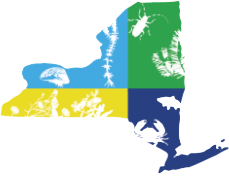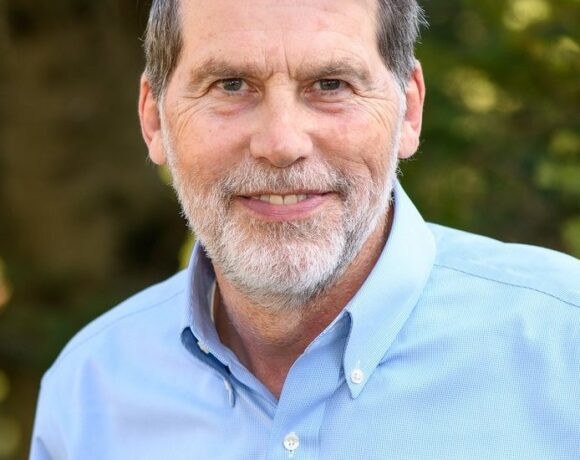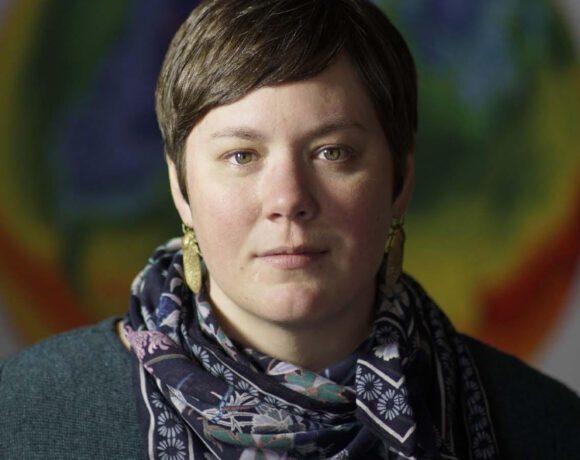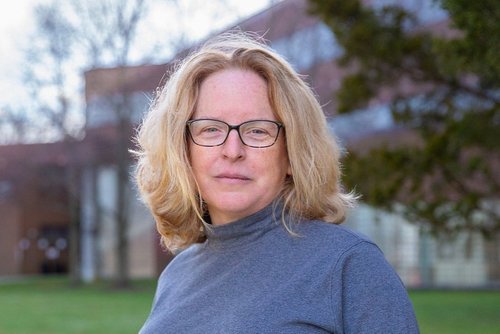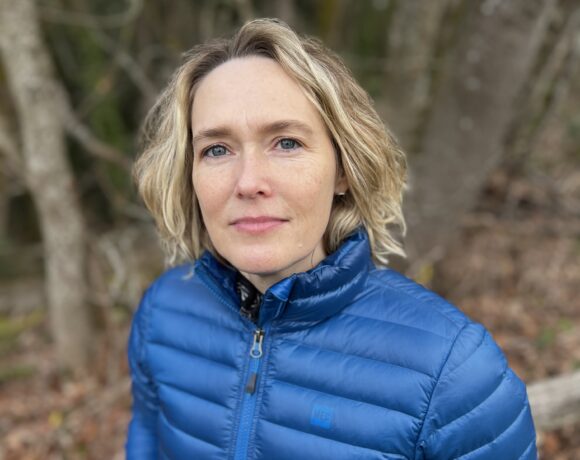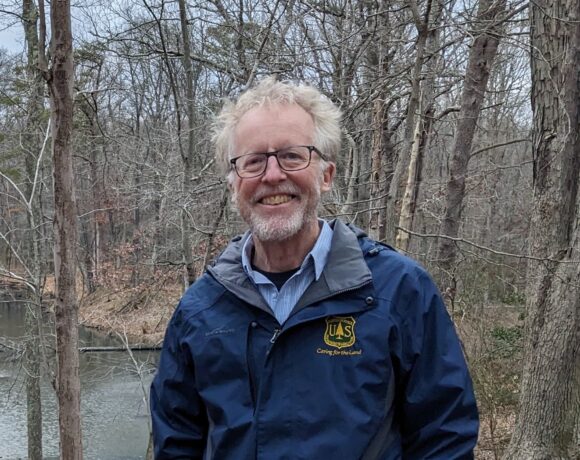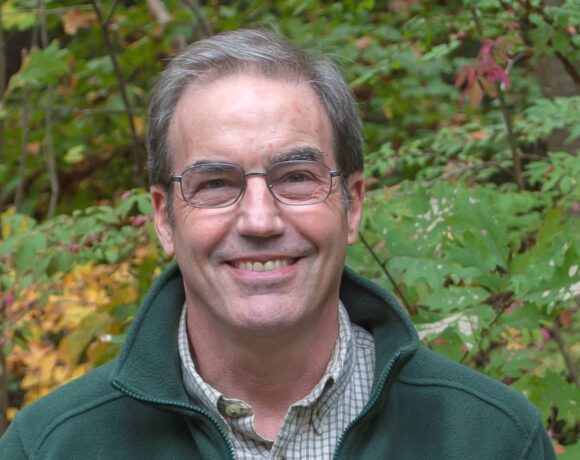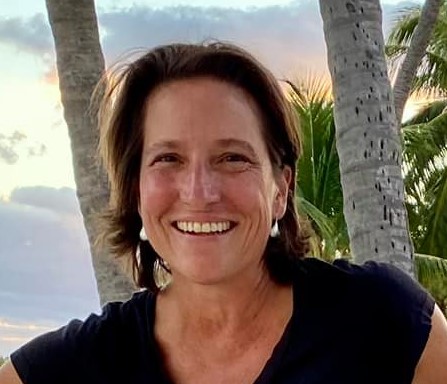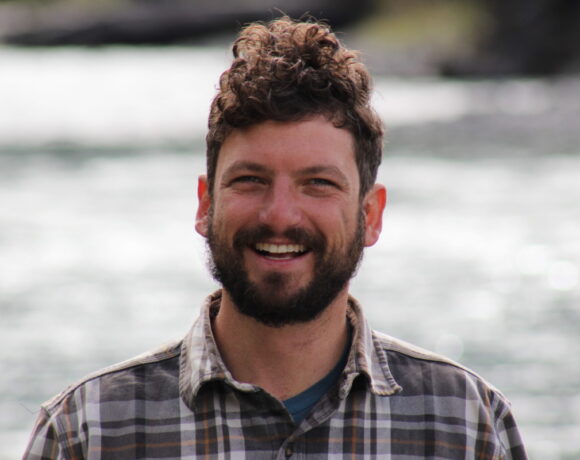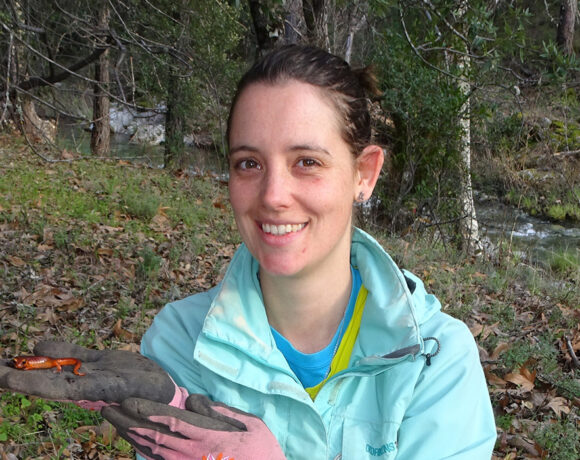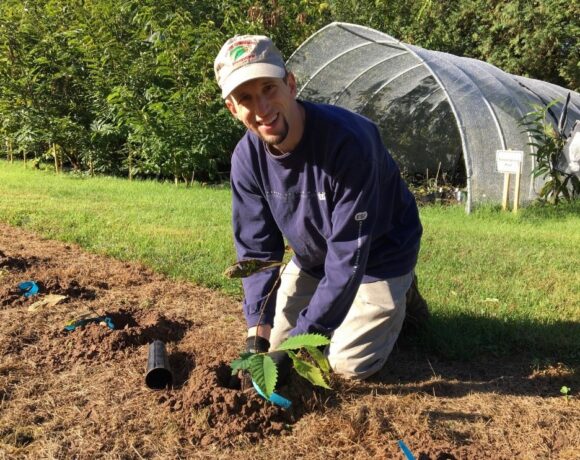This month, we interviewed Dr. David Lodge, an internationally recognized conservation biologist and one of the world’s leading experts on invasive species with a long history of collaborations to advance science into the public policy arena.
Watch the interview here:
View transcript:
Justin Dalaba (JD)
Alright, so hi, David. Thanks so much for taking the time to chat with us today. We’re really excited to share your expertise with our stakeholders across New York. And you’re considered one of the world’s leading invasive species experts. You’ve collaborated extensively to advance science into the public policy arena. I know you wear a number of hats, so just to start out. Could you tell me a bit about your work at Cornell, as it relates to invasive species?
David Lodge (DL)
Yeah, Justin it’s great to talk to you and thanks for that generous introduction. I love being able to talk to folks who are on the frontline of sort of managing invasive species and those sort of decision makers and state and federal agencies and other organizations because that’s where the action really occurs. So, I spent my own career in largely doing academic research about invasive species, which I’ve been working on for well, since 1982. But also, in the last 25 years had a number of collaborations with managers and agencies and experts in many disciplines and out of the realization that to really solve the invasive species problem, we need not only to better understand it and diagnose this, which is what we academics do really well, but we need to be working with those who are really trying to help solve the problem. So, it’s great to have this opportunity, thanks. So, since I came to Cornell seven years ago, I’ve continued along with always with collaborators, many collaborators, and multiple disciplines to work on various aspects of invasive species. And I’ll just say, maybe to be brief, the thing that my laboratory at Cornell has been working on most steadily has been expanding the use and applications of environmental DNA, or eDNA, and this is work that’s always been collaborative at Cornell with Dr. Jose Andres and recently with, now graduated, PhD student Cara Andres. Just, by the way, they’re not related. But both have been working very closely with me and others at Cornell and elsewhere to get more and more information about populations of species from environmental DNA so we can talk more about eDNA later. But that’s really what we’ve been thinking and working most on in the last seven years.
JD
Yeah, and I’m really excited to dive deeper into that. And before we do, I did just want to, if you don’t mind sharing, I did want to ask, you know, what brought you into the invasive species realm to begin with? Did you have a personal story or interest that sort of brought you down this path?
DL
Yeah, I guess I’ll say a couple of things by way of sort of personal experience. For whatever reason, I’ve always had an interest since early in my research career as a graduate student, and as an undergraduate. If I was going to do science to be doing science, that would sort of make a difference outside the Academy – make a difference in how we manage the relationship between humans and nature. Early in my career, when I was a post-doc, I had a great mentor named Jim Kitchell, who’s now dead. He was at the University of Wisconsin, who was indulging my questions about – Jim, I don’t know what I’m going to do with my life. You know, what should I do as a researcher? As the Academy for me, I want to be useful. And he said this. He said, look, David, and he did this with his hands. He said, look, there are a lot of really intellectually challenging problems in the world that your fellow academics will find worthy of study. So, you know what? Whatever you do, you got to do in that. It’s got to satisfy that, you know, peer interest, or you’re not going to survive as an academic. But, he said, there’s also a whole lot of problems in the world that have immediate intellectual application in the real world, if you will. And he said what you need to look for is the overlap of those two classes of problems. And so that’s really guided many of the choices of my career in terms of what I work on. The second thing I’ll say is that, when I was still fairly, I was tenured, but still early in my career I was asked to be the first chair of a brand new federal advisory committee called the Invasive Species Advisory Committee, a committee that still exists and its role is to provide advice to the national Invasive Species Council, which is made-up of the secretaries of federal agencies that all have something to do with invasive species. And I thought, man, this is great. I’m going to go into this with so much expertise. I’ve got so much to offer. I know the answer to all this stuff, just a little touch of arrogance perhaps, which may be a little bit endemic in the Academy. And I went to the first meeting and all the questions that needed to be answered and they came from managers and federal and state agencies were not questions that I could answer. And they were not questions that anybody in academic research was studying. They were questions like, well, what can we do about this? What are the management tools? How much do they cost? What’s the benefit? And so that really made me go back and completely transform my own research career. One of the first steps was collaborating with a lot of economists. So long story, and lots of directions from there, but those were two formative experiences that guided the sort of flavor of research that my collaborators and I have done 100 invasive species for many years.
JD
Yeah, absolutely. I love to hear how you kind of have this interest in science and have really guided in, in a practical sense through those opportunities that were presented to you. And now you’re director of the Cornell Atkinson Center for Sustainability, which is, you know, really, it is leading the charge on advancing some of these solutions to interrelated problems like climate change and land use, invasive species, and so you’ve mentioned eDNA is a big initiative of that. So, I wanted to hear a little bit more now about some of those initiatives and research areas that you’re most excited and encouraged to see advancing?
DL
Yeah, in my role is director of Cornell Atkinson, Center for Sustainability. It’s not about primarily about fording my own research or eDNA in in particular, but it’s more about facilitating work across Cornell, work that has a chance, better than average chance, of moving from knowledge into impact in the world outside the Academy. And at Cornell Atkinson, when we talk about impact, we’re talking about influencing public opinion, or changing corporate practices, or guiding the development of more sustainable products, or influencing the development of public policy. Those are the kind of impacts we’re after. So, we describe ourselves as sort of a boundary organization. We’re trying to connect across the boundary of the Academy, what goes on in the universities, with what goes on in decision-making outside. And so, we’re working on climate, reducing climate risks, accelerating the energy transition, increasing food security, and advancing one health. And sort of biodiversity issues are, cut across many of those things, including the threats that invasive species pose. So that’s my take, my approach to invasive species research throughout my career, is an example of the kind of approach we take more generally to all those issues at Cornell Atkinson.
JD
Yeah, you know, it’s such a key approach to actually making change happen. And so, now I wanted to just dive deeper into the eDNA side of things because that is considered a decision support tool. So, I wanted to hear from your experience and perspective, you know, what does that tool look like to you in terms of supporting decision making? And are we at the point where we can really, you know, trust this technology to help make informed decisions on the landscape?
DL
To start by answering the very end of your question – Yes, we are at a point with in eDNA where it can be used as a reliable tool for making decisions in some aspects of natural resource management. So, I’ll come back to that. But if we just look back 15 years, that’s where eDNA started. I mean, the 1st paper that many of us would regard as eDNA, at least for large organisms, was published in 2008, and the explosion of academic research papers published in eDNA is remarkable. My own lab has contributed at least 35 papers to that explosion in the last 15 years, and the general trend is we and all the other folks around the world who are working on eDNA, just keep learning how to extract more and more information from the DNA that’s floating around out there in every stream, river and lake and the ocean. So, there are many different applications, but I’ll just give you 2 where I think eDNA is either the best, or maybe even the only tool that we have for very important, and indeed even urgent problems. So, one is in the invasive species realm. The detection of rare species, whether they’re imperiled, or whether they’re rare because it’s the leading edge of an invasion. That’s always been a challenge and invasive species management is to detect where are those species. In fact, where is the invasion? We can’t manage something that we can’t measure, and so eDNA is the most sensitive tool available to us to detect the occurrence of rare species. We were in at the leading edge of applications of eDNA to the detection of the leading edge of an invasion of Asian carp in the Chicago area waterway back starting in 2009. And the advances in the way in which we do eDNA detection have remarkable, from gels when we first started to very sophisticated qPCR and digital droplet PCR these days, just new tools, new better ways to do the same thing. But the key thing is there’s not another tool out there that is capable of detecting where the species are when they’re in very low abundance. The traditional tools, for example, of fisheries. Electro fishing or netting, those are very crude with respect to eDNA. By comparison with eDNA, they’re just not going to capture species when they’re rare. We saw that with Asian carp and it’s been demonstrated in many, many studies on many, many different kinds of organisms, not just fish since then. So that’s one example. Another is not invasive species, but it’s in a very globally important issue to accelerate the energy transition from fossil fuels to renewable energy, we need to be able to rapidly characterize biodiversity at big geographic scales. For example, in the ocean. For offshore wind developments and if we’re going to get that energy transition accomplished on a reasonable timeframe, we need quicker ways to do biological assessment. We need quicker ways to measure biodiversity and what we now call metabarcoding with DNA, is the way to do that at big scale from just water samples. And it’s not just about detecting a species, it’s about detecting what are all the species that are out there.
JD
Definitely. And it’s been really exciting to see this, you know, emerging tool just expand so rapidly across so many different sectors. But like any tool, there’s still a lot to work out, right? And so, while we’ve come so far in such a short amount of time. You know, I still hear with our invasive species managers in particular, you know, how can we use this more? It’s not available to everybody and so I wanted to hear from you. What are some of those challenges you see to implementation or maybe areas for growth still with eDNA?
DL
Yeah, this is a very important question. I’m very sympathetic with managers because. As soon as an announcement by anyone is made of the detection of an invasive species, where it’s a surprise, managers at the state level or the federal level are immediately under public pressure to do something. So they are understandably and justifiably skeptical about new tools, so they don’t want to be called to account if they’re not confident in the information that’s being provided by scientists. So, I think for those of us in the research community, we have to be very careful. One, about how we communicate results, and two and more importantly, I think in the long run is being much clearer than we usually are in research about – this is a set of techniques and an application for eDNA that is by consensus in the scientific community reliable. This is something, natural resource managers, you can take and use now. On the other hand, there’s a lot of things we’re working on in research. What I mentioned at the onset of our conversation, Justin, about extracting population genetic information. That’s still in the research and development stage. I’m not going to tell any natural resource manager that they should be hanging their decisions on that, but I would say we’re at the point now that if a reliable, high-quality lab with quality control, using the established consensus techniques, detects an invasive species in a place you didn’t expect it, then that is reason for concern and attention and repeated sampling to increase the confidence. And I’d say, but we’re at that point of confidence and reliability that we don’t need to then say, well, we’re not going to do anything about it till we can catch it with a net or electrofishing that’s counterproductive. We don’t do that for imaging or other sophisticated diagnostic techniques in medicine. For example, we don’t say, well, I don’t believe you doctor from this scam that I have cancer. We say Oh no, that’s a reliable tool. It’s been tested for years and yes, please proceed with treatment. So, we need to get to that point. With some combinations of eDNA techniques with certain applications and use it. But we still need to get to a point where there’s practices that are certified and understood by the managers.
JD
Yeah, certainly. And I really appreciate that metaphor at the end. It does kind of put things into context of, you know, just how far we’ve come with the technology. But, speaking of communicating with stakeholders, you mentioned earlier on, you’ve served on the national Invasive Species Advisory Committee at the very beginning there and have played a key role in in policy development. So, I wanted to hear from your perspective when you’re communicating with decision makers, what are the most important messages that you hope to convey and in particular around invasive species challenges?
DL
I think that in general – what persistent frustration, which still at least exists in me, is that in the invasive species realm, we have continued to be better at diagnosing the problem than we are, way better than we are, at responding to it. And it’s because our toolbox of response, whether it’s early detection with eDNA, we got a better tool there now, or whether it’s eradication after you’ve had an effective early detection. We still have a pretty empty toolbox for eradication for many species. That is, tools that are not so blunt that they’re not going to kill everything. We still have very few selective tools available for eradication. We still have very few tools in our toolbox for control and management and slow the spread efforts. There are very few really compelling examples, that are cost effective, of doing invasive species management and because and that is because there’s been so little investment, private and public investment in adding tools to our toolbox in responding to invasive species. So I would like to think that, using eDNA as an example, that technological innovation in the research community can lead to improved management, and we’ve seen that happen with eDNA and Asian carps and many other species. That increases the motivation for not only policy development, and improved natural resource management, and management of invasive species. But then you get a cycle going, where that also encourages continuous improvement in the research and development for getting more information out of eDNA. And then that increases the motivation for new approaches to manage. So, I’d like to think we’re at the cusp now with DNA where we, we are seeing some private investments. We have environmental consulting firms that are investing in eDNA. We have some firms that are exclusively focused on providing eDNA products and services. And if we can get to the point where that economy takes off, and it’s going to take off because changes in policy, and changes in by in decisions by natural resource managers say we need more eDNA services because we’re going to use it more as a reliable and trustworthy tool for management. That starts a cycle, I would, I think of it as a virtuous cycle – that that starts spinning, that continuously improves both the technology, and the management tools, and the management practices, and policies.
JD
Yeah, absolutely. And I think that’s such an optimistic outlook for the future, I think, of eDNA and I did want to ask as well you know for you what lies ahead with your research interests and with eDNA advancing in policy, what do you hope to see moving forward in your work?
DL
Yeah, I should end two sort of very different ways. One, on the research and development front that is eDNA work that’s not yet ready for prime time on the front lines of management. So, we’re still in the R&D phase. I think we’re going to get to the point where we get can get much better understanding of population structure and even population size from eDNA. We, Cara Andres and Jose and Suresh Sethi at Cornell, and other collaborators and I have been and working on that, publishing papers in the last few years of extracting that information, not just from mitochondrial DNA, which is where the field started, but also from nuclear eDNA. So that opens up a whole other realm of learning about species, genetic diversity, and population size. Which is interesting on its own in the research community, but also of potentially practical importance, particularly when you think about managing fishery stocks. Now I’m going to go to the other end of the spectrum where the Office of Science and Technology Policy (OSTP) at the U.S. White House has asked the staff at OSTP to develop a national strategy for eDNA. And I think this is very important because this is the opportunity to standardize some of the practices across federal agencies, lead to greater coordination, lead to more clarity about which applications of eDNA are ready for reliable management decision basis right now. And so that we as a society will reap greater rewards more quickly for the improved management of invasive species and ecosystems, and biodiversity in general.
JD
Yeah, without a doubt. I’m excited to see that all develop and see how it takes shape. And I wanted to say I really appreciate you taking the time to give us your perspective on this. I know you’ve worked with eDNA for a number of years and you have such a wealth of knowledge around not only the science, but you know putting into practice and policy. So, this has been a really interesting conversation to me, but I did want to leave you with one question, which is, is there anything we didn’t cover that you think you’d like to add?
DL
Thanks Justin. This has been fun to talk about this. I would just say now that I have a few decades of experience in this, I would say to younger researchers, and younger natural resource managers, don’t get discouraged. Big challenges take a lot of time to solve. They are almost always solved incrementally, and while I’ve been frustrated at many points in my career that we’re not moving faster, and I still think right now, we’re not reaping some of the benefits of technology that currently exist. It takes time, because these are not just, they don’t just depend on technological innovation or new ideas. Those have to be socialized and adopted and understood and enabled by policy. So, it’s a complicated societal problem that won’t surprise anybody that’s been working on invasive species. But when I look back. The conversation now, the things we’re doing now, are so much more and better than when I started working on invasive species in 1982. So, there’s a lot of progress that happened that has happened, realization that invasive species are a problem, framework that has led to much more effective communication and action to control invasive species. Understanding the stages of invasion and what options exist for management in each space. But the big opportunity now, is to put more investment into tools that we can better respond to invasive species at each stage of invasions. And I think that takes a continued and accelerated sort of combination of technological innovation, conceptual innovation and policy and management innovation, altogether.
JD
Yeah, such an important piece of advice to keep in the perspective and I think that’s a perfect note to round out this conversation on. So, David, thank you again for taking the time. We really appreciate it.
DL
Thank you, Justin. It was a pleasure to talk.
Learn more about David Lodge’s work here: ecologyandevolution.cornell.edu/david-m-lodge
More researcher spotlights:

